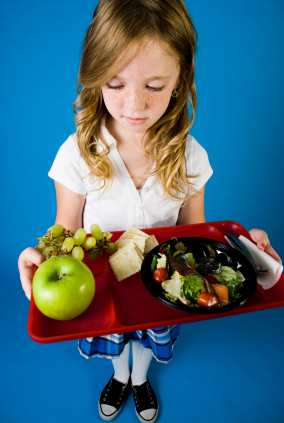 A school cafeteria can feature delicious smells, eye-catching snacks, and distracting friends—all of which can lead a hungry student to select less healthy choices when buying lunch. However, preordering meals ahead of time (such as at the start of the school day in a classroom setting) eliminates these sensory cues and allows students to choose healthier options without the immediate temptations of the lunchroom.
A school cafeteria can feature delicious smells, eye-catching snacks, and distracting friends—all of which can lead a hungry student to select less healthy choices when buying lunch. However, preordering meals ahead of time (such as at the start of the school day in a classroom setting) eliminates these sensory cues and allows students to choose healthier options without the immediate temptations of the lunchroom.
In a study by Cornell University, students in two New York state elementary schools were allowed to digitally preorder their lunches each morning. Researchers examined the food options and determined which meals were healthier/less healthy based on the nutrient densities of each choice. The results showed that preordering improved lunch selection compared to standard in-line lunchroom ordering by increasing sales of nutrient-dense foods:
1) Preordering increased healthy entrée selection
- Without preordering, only 15.3% of students chose the healthier entrée but when they ordered ahead of time, 29.4% of kids chose the healthy option.
2) Preordering led to decreased selection of less healthy choices
- Without preordering, students chose the less healthy option a whopping 85.7% of the time—but when they preordered, they only chose it 70.8% of the time.
So just how strong is this lunchroom temptation?
- Selecting lunch in the actual cafeteria decreased healthy choice selection by 48% and increased less healthy choices by 21%!
Take-Home Tip for You to Try
To help students avoid impulsive purchasing of unhealthy foods, try pre-ordering in your school system! Although this study used computerized preordering system, paper-based pre-ordering is an inexpensive alternative that can easily be implemented in order to prevent the shift to unhealthy lunch selection.
Contributor
Kelsey Gatto, Cornell Center for Behavioral Economics in Child Nutrition Programs
Source
Wansink, B., Shimizu, M., & Brumberg, A. (2013). “Association of nutrient-dense snack combinations with calories and vegetable intake.” Pediatrics, 131(1), pp. 22-29.
